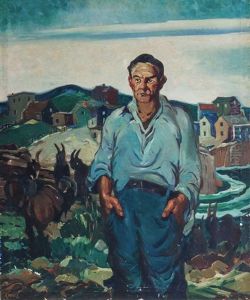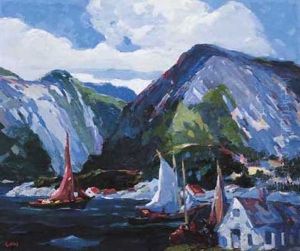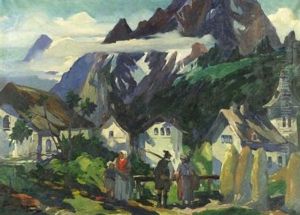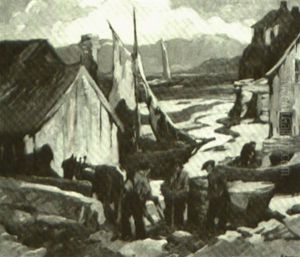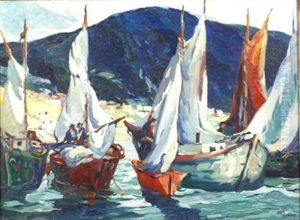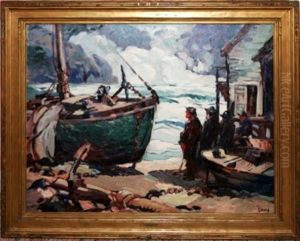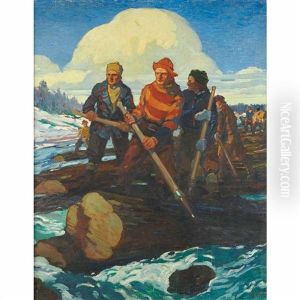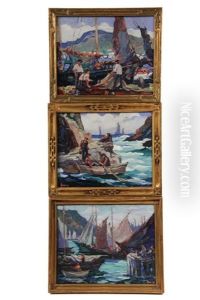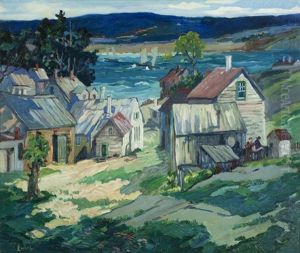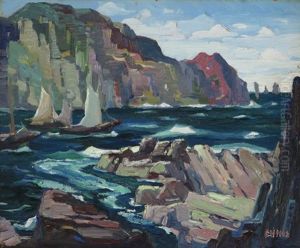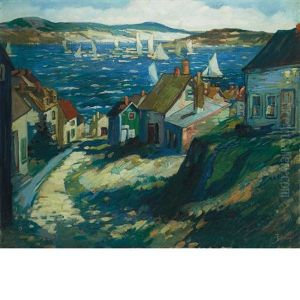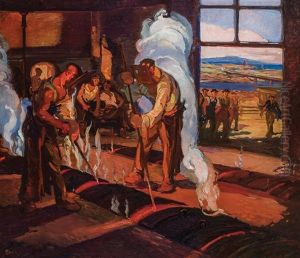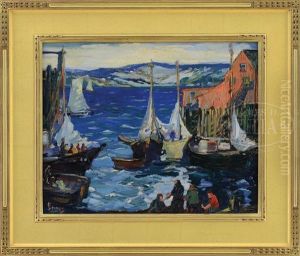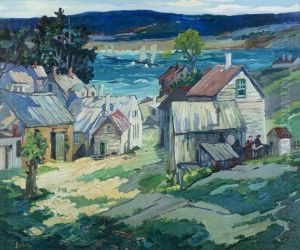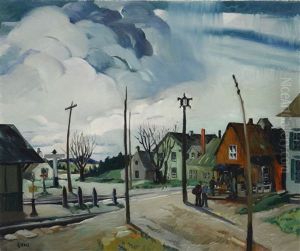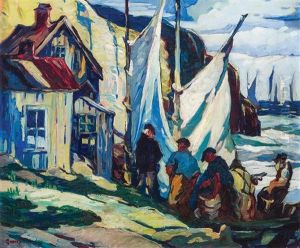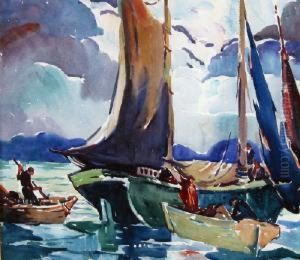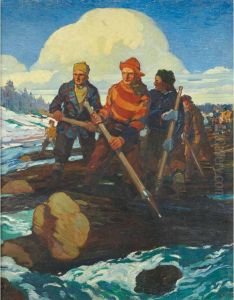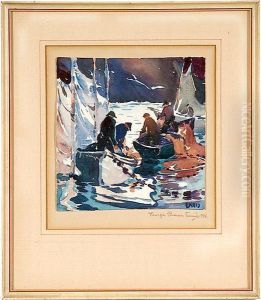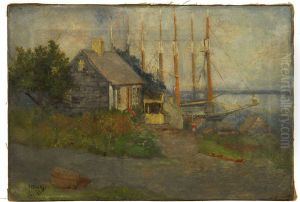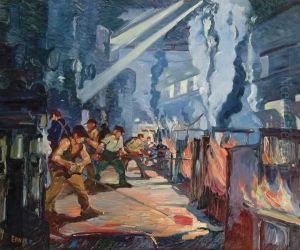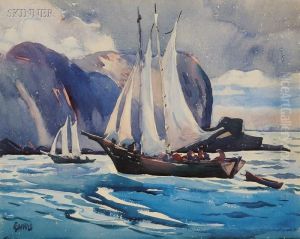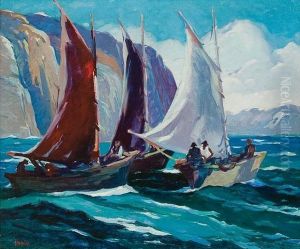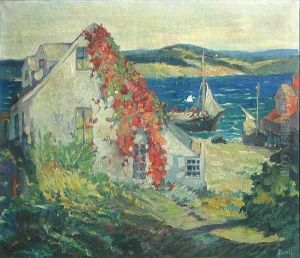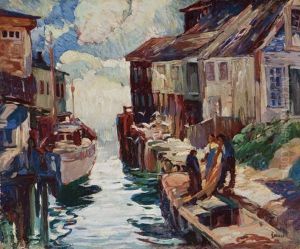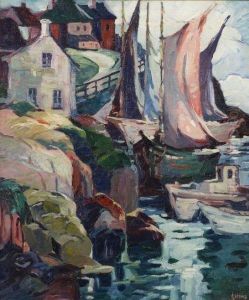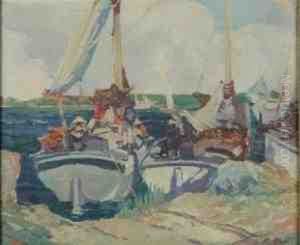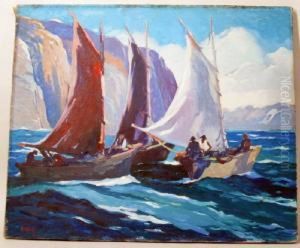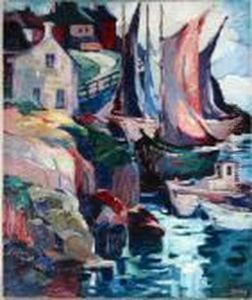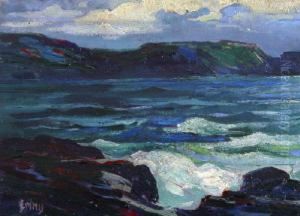George Pearse Ennis Paintings
George Pearse Ennis was an American artist known for his contributions to landscape painting and watercolors, as well as for his significant role as an educator in the field of art. Born on August 1, 1884, in St. Louis, Missouri, Ennis embarked on his artistic journey at a young age, showing an early interest in the arts. He pursued formal education in art at the Art Students League of New York, where he was influenced by the teachings of prominent artists of the time.
Ennis's style evolved over the years, initially reflecting the influence of the Impressionist movement, with a focus on capturing the effects of light and color in his landscapes. He traveled extensively in the United States and Europe, drawing inspiration from various environments and incorporating these influences into his work. His paintings often depicted scenes of the American countryside, seascapes, and urban landscapes, showcasing his versatility and keen observational skills.
Beyond his work as an artist, George Pearse Ennis was deeply committed to art education. He served as an instructor at the Art Students League of New York and later as the director of the Grand Central School of Art. Ennis's teaching philosophy emphasized the importance of both technique and individual expression, encouraging his students to develop their unique artistic voices. He authored several instructional books on painting and drawing, which further solidified his reputation as a respected educator in the art community.
Ennis's contributions to the art world were recognized with numerous awards and exhibitions throughout his career. His works were exhibited in prestigious venues such as the National Academy of Design and the Pennsylvania Academy of the Fine Arts, among others. Despite his success, Ennis continued to explore and experiment with new techniques and subjects, demonstrating his relentless pursuit of artistic growth.
Tragically, George Pearse Ennis's life was cut short when he died in a car accident on June 10, 1936. His legacy, however, continues to live on through his art and his influence on generations of artists and students. Ennis's dedication to capturing the beauty of the natural world and his commitment to art education have cemented his place in the annals of American art history.
